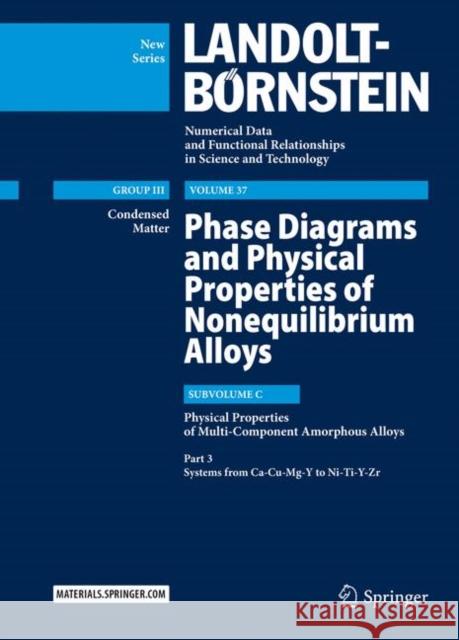Phase Diagrams and Physical Properties of Nonequilibrium Alloys: Subvolume C: Physical Properties of Multi-Component Amorphous Alloys, Part 3: Systems » książka
topmenu
Phase Diagrams and Physical Properties of Nonequilibrium Alloys: Subvolume C: Physical Properties of Multi-Component Amorphous Alloys, Part 3: Systems
ISBN-13: 9783662579190 / Angielski / Twarda / 2019 / 369 str.
Phase Diagrams and Physical Properties of Nonequilibrium Alloys: Subvolume C: Physical Properties of Multi-Component Amorphous Alloys, Part 3: Systems
ISBN-13: 9783662579190 / Angielski / Twarda / 2019 / 369 str.
cena 2017,53
(netto: 1921,46 VAT: 5%)
Najniższa cena z 30 dni: 1927,76
(netto: 1921,46 VAT: 5%)
Najniższa cena z 30 dni: 1927,76
Termin realizacji zamówienia:
ok. 22 dni roboczych
Bez gwarancji dostawy przed świętami
ok. 22 dni roboczych
Bez gwarancji dostawy przed świętami
Darmowa dostawa!
Kategorie BISAC:
Wydawca:
Springer
Seria wydawnicza:
Język:
Angielski
ISBN-13:
9783662579190
Rok wydania:
2019
Wydanie:
2019
Numer serii:
000831928
Ilość stron:
369
Waga:
0.95 kg
Wymiary:
27.43 x 25.15 x 2.54
Oprawa:
Twarda
Wolumenów:
01











